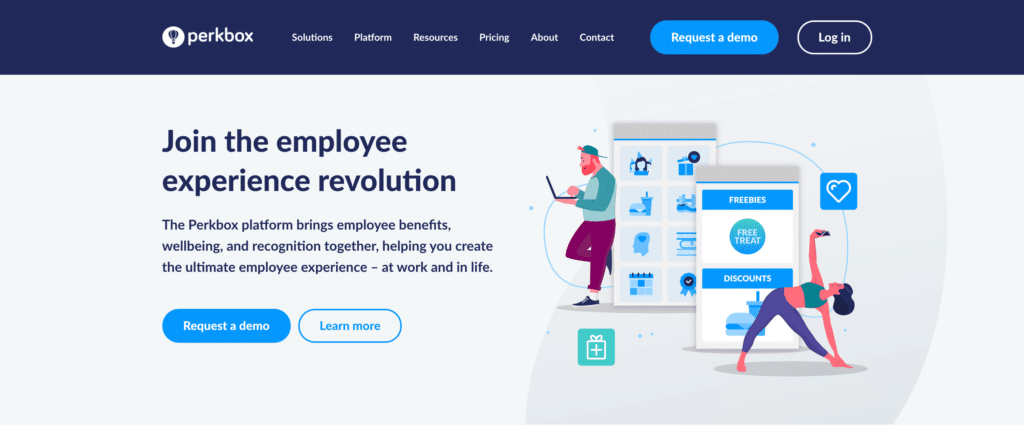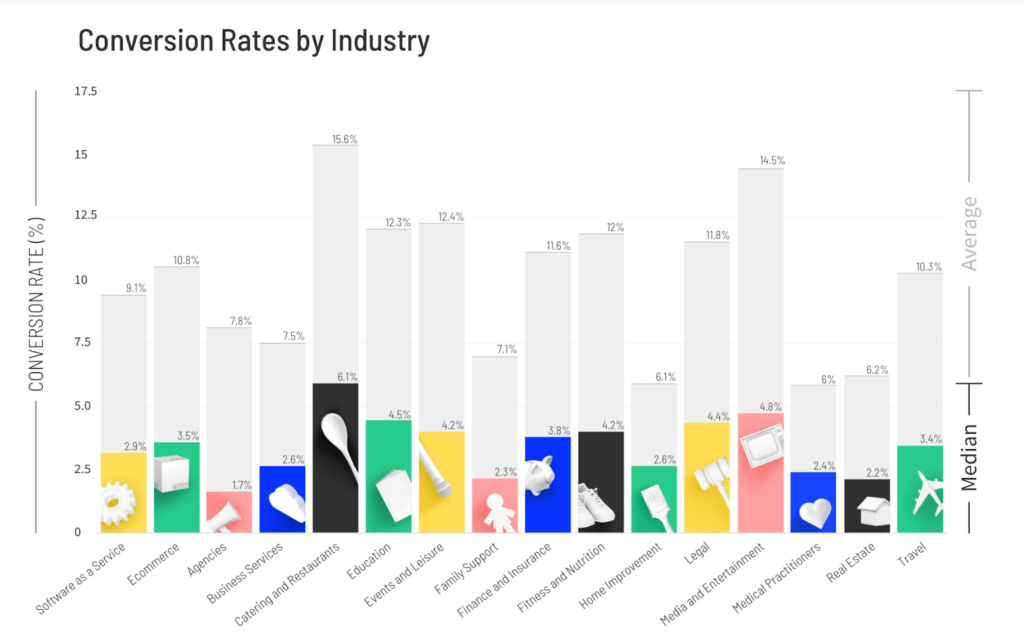You probably know the ins and outs of your website off by heart. Each form, each landing page, each call to action. When it comes to changing it – particularly when you are aware that it is not generating enough quality leads, you need to take a step back in order to start from scratch. If you want to design a website for inbound marketing, what do you need to look at? What conversion rate does it need to have? At Plezi, we’ve been there and done it, so we’ve got a whole load of ideas about how you should go about it.
If you have a website that isn’t converting visitors, start by taking a look at the article we’ve written about how to start to engage your visitors and why, this to get a better idea of the next steps you need to take.
In this article, we go through a number of things you can do to turn your website into a real lead generating machine.
1. Redesign your website for the right reasons
It’s certainly possible to redesign your website very quickly. But for it to be truly effective, you have to be clear about what your objectives really are. If you’re optimizing your website for inbound marketing, all your efforts have to be guided by one thing: increasing your conversion rate.
In inbound marketing, an unknown visitor to your website is “converted” when they become a prospect that you know something about. Typically, this happens when a visitor provides you with information like their email address on your website. This conversion step is crucial because it lets you qualify prospects to gauge their level of interest in your product or service and determine how likely they are to make a purchase. By doing just this, marketing can help make the job of the sales team easier.
1.1 Optimizing your website: what does it mean and why should you do it?
Attracting traffic to your website is all well and good, but it’s only half the journey! You can attract thousands of visitors every month but not generate one single quality lead. Your website should be able to gradually convince visitors that your offering or solution is worth trialling and ultimately purchasing.
To ensure that you don’t miss any of the potentially valuable contacts that visit your website, you need to ensure it has a range of different components that can be used to convert visitors into qualified prospects. Examples of these include online forms, calls to action, and landing pages. The aim of all of these is to get visitors to take a specific action. For example:
- sign up for your newsletter using a form;
- request access to a webinar from a landing page;
- download a white paper.
One of the main goals of any B2B business is to know more about its prospects. A visitor will be converted, for example, when they fill out a contact form. This action represents the change from being a previously unknown visitor to a known contact (or prospect).
If you look at the first page of a site such as Perkbox, they immediately try to engage and convert their visitors. Their entire website is designed with one thing in mind: getting visitors to engage.
Your website should also be focused on what you want to acheive. If you want to convince prospects to provide you with more information, everything should lead visitors in this direction.
1.2 What is a good website conversion rate?
It’s not difficult to calculate the conversion rate of your website. Just divide its number of converted prospects by the total number of visits. You can also express this in the following way:
Conversion rate (in a given period) = (Number of converted prospects in this period) / (Number of website visits in this period).
For example, if your website has 1,000 visitors every month and from these you generate 25 leads, your conversion rate will be 25/1000, or 0.025%.
Once you’ve worked out this figure, what can you do with it? The most important thing is to look at it in the context of your particular sector.
In their 2021 conversion benchmark report, Unbounce analysed the average conversion rates of B2B companies by industry. You can see from the graph below that, while a 4% conversion rate might be excellent if you are a B2B communications agency, it leaves lots of room for improvement if you are in hospitality, for example.
These figures should be used as a rough guideline. Unbounce is an American company, and the benchmark was produced using data from their customers. As you might already be aware, B2B standards can change a lot depending on the region and culture!
2. Ten ways to build your website for inbound marketing
Here is a list of 10 things you can get started on right now to optimize your website for inbound marketing.
2.1 Analyse your current website traffic
To really improve your website going forward, you need to have a better idea of how it works right now. You can use the services of a specialized agency to help you do this or make a start on it by yourself. To identify which pages need improving, you can look at:
- the bounce rate for each page (specifically key pages in the conversion path);
- the source of visitors to these pages.
Knowing the bounce rate and the source of visitors lets you answer two key questions in inbound marketing: where do visitors to your website come from, and how long do they stay there? Some pages, for example, might have a high bounce rate which can be explained by the fact that visitors aren’t the ones you should be targeting (e.g. the result of a poorly designed Facebook campaign).
Tools to use: Google Analytics, Google Ads, and Google Trends
How to improve: Depending on your results, try adjusting your traffic acquisition channels by focusing on other traffic sources like paid advertising or certain social networks.
2.2 Make sure web pages load quickly
Page load time has been an SEO ranking factor since Google introduced its new BERT algorithm in 2019. It can have a significant impact on where your web pages rank in Google, and as a result, on traffic to your website.
Page load time also has a direct impact on our credibility. According to Neil Patel, 40% of internet users leave a website if it takes more than 3 seconds to load and a one second delay in page response can result in 7% reduction in conversions.
Tools to use: GT Metrix or Dareboost are very useful for monitoring the performance of web pages.
How to improve: In our article on optimizing page load times for your website, we share plenty of ideas for doing just that. But you can already start by compressing the size of images on your website to improve page speed. Time really is money!
2.3 Ensure that your website is responsive
A “responsive” website is one whose formatting changes to adapt to the device you are accessing it from. This is also an important ranking factor for Google, and websites which don’t adapt for browsing on mobile devices are now much less visible in search engine results. So you need to ensure that users have an optimal experience of your website on mobile.
2.4 Clearly present your offering
Your website needs to be clear about who your offering is targeting, how it can address their problems, and what differentiates it from the competition, all without overloading visitors with information. This is especially true on the home page of your website.
Rather than trying to address all possible visitors, you need to think about who your target market really is. You need to ask yourself, who is our message aimed at? Who is likely to purchase our product or service? The terms you use, the particular angle you take, and the problems you seek to address will all inevitably change according to your answers.
Tools to use: Website monitoring tools to get a better understanding of your audience and a tool for creating buyer personas to gather this information and start putting it to use.
How to improve: Interview your customers, asking them for feedback on your website and its main messages. If your website has a chatbot, you can also pay attention to the questions people ask about your offering. If the same questions keep getting asked, it probably means that something isn’t clear!
2.5 Improve your website’s user experience
Visitors to your website should be able to browse a series of different web pages almost without realizing it. So you need to think of their experience as a logical path. What pages do you want them to look at? What actions do you want them to take? Where will they be able to quickly find answers to their questions?
Tools to use: Hotjar lets you see how visitors interact with your web pages using its heatmaps tool. This gives you a better idea of what information is seen and read, and what isn’t.
How to improve: The best way to do this is to have a good understanding of your buyer personas. By starting with some basic assumptions about visitor behaviour and refining these as you go using interviews with customers and feedback from the sales team, you can end up with a wealth of information to improve your website.
2.6 Adapt content to your target audience
By adapting your content topics, vocabulary, and content paths to your different target personas, you’re much more likely to convert them as a result. We have talked before about this and gathered together ideas on creating content for specific buyer personas. The best way to create content with high added value for them is to put yourself in their shoes.
How to improve: If you want to create content with high added value, you always need to ask yourself:
- Can our content be clearer?
- Are we really addressing a specific need for one of our buyer personas?
- Which format is best suited for this content? (e.g. white paper, infographic, article, webinar)
2.7 Make sure that calls to action (CTA) are clearly visible
If you want your website to generate leads, it’s vital that you have calls to action (CTA) on key pages. They indicate the exact action that you want visitors to take. So you need to have a number of them on your website and ensure that they are carefully placed to match the offering presented.
CTAs that are well-designed and well placed are even more likely to convert visitors.
For example, on a pricing page, include a CTA offering a demo or a contact request form; on a product features page, a CTA to download a case study detailing real-world use of features.
Often, a CTA that isn’t effective is a CTA that doesn’t address your buyer personas, or which isn’t placed in the right location.
How to improve: To improve a CTA that isn’t as effective as it should be you can:
- rephrase it, so that the value proposition is clearer and more appealing
- make sure it clearly describes what benefit a visitor stands to gain by clicking on it
- redesign it so that it stands out from the rest of the page.
2.8 Redesign your landing pages
An effective landing page that clearly lists the advantages of filling out an online form, or downloading a white paper for example, plays a key role in improving your conversion rate.
Tools to use: Marketing automation software like Plezi enables you to create high-performing landing pages with just a few clicks, letting you focus on what’s really important, content!
How to improve: By spending some time adapting your landing pages to your target audience (e.g. addressing specific problems, using a certain vocabulary) you can quickly start seeing results.
2.9 Improve your online forms
If prospects don’t fill out your online forms, it could be because they’re not well-designed. Both the quantity and value of information has to match:
- the value of the content provided in return;
- the target’s position in the purchase funnel.
For example, you should only be asking for a small amount of basic information (e.g. first name, last name, email) for awareness stage content. But you should be asking for much more specific information (e.g. marketing budget, timeframe for implementing marketing automation software) in exchange for purchase stage content like a demo request.
Tools to use: With Plezi, you can create smart forms, which gathers the information you need from prospects gradually, and without ever asking for the same information twice.
How to improve: The main thing to remember is to keep forms simple and to ask for information gradually according to a prospect’s position in the buyer’s journey. Nobody likes having to fill out a dozen fields at once just to download a white paper!
2.10 Maintain your blog
Inbound marketing is based on content. And f there’s one thing you need to pay careful attention to, it’s your blog. By promoting your blog articles, you can attract traffic to your website, some of which will potentially be leads, and also improve your SEO ranking.
In addition, blog articles are a great place to integrate web banners that promote your downloadable resources, CTAs that offer visitors more information by watching a webinar, or which link to another article on the same subject. Your blog is often also the first point of contact that potential prospects have with your company.
How to improve: The real secret to having an effective blog is publishing articles on a regular basis. This generally requires having an editorial calendar and resources that are dedicated to creating content. It’s a part of your website that requires a certain amount of investment, but which can really pay off.
If you were looking for a sign that you should get started on redesigning your website, here it is! But optimizing your website for inbound marketing doesn’t have to be scary. By being well-prepared and knowing exactly what to focus on, it can (almost!) be a lot of fun. Have you already made a start? What parts of your website do you want to optimize? Why not tell us about it in the comments section below?








